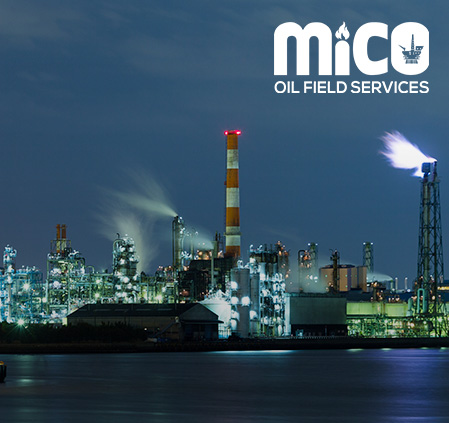Environmental Impact Assessments (EIA)
Environmental Impact Assessments (EIA) are vital processes that play a crucial role in sustainable development by ensuring that potential environmental consequences of industrial projects are thoroughly evaluated before they commence. Originating from global concerns about environmental degradation, EIAs have become a standard practice, particularly in industries with high environmental risks such as oil and gas. The primary objective of an EIA is to predict environmental impacts at an early stage in project planning and design, finding ways to reduce adverse effects and shape projects to suit the local environment.
In the oil and gas sector, EIAs are indispensable. The industry’s activities—ranging from exploration and drilling to refining and transportation—pose significant risks to the environment. These risks include air and water pollution, soil degradation, habitat destruction, and greenhouse gas emissions, all of which can have far-reaching consequences for ecosystems and communities. EIAs help in identifying these risks and in developing mitigation strategies that minimize the environmental footprint of oil and gas operations. By incorporating EIAs into their planning processes, companies not only comply with environmental regulations but also demonstrate a commitment to corporate social responsibility and sustainable development.
The growing awareness of climate change and the global push for sustainability have further highlighted the importance of EIAs in the oil and gas industry. Stakeholders, including governments, environmental groups, and the general public, are increasingly demanding transparency and accountability in how environmental impacts are managed. An effective EIA ensures that all potential environmental consequences are considered, providing a balanced approach that allows for economic development while protecting the environment for future generations
Importance in the Oil and Gas Industry
The oil and gas industry is often associated with significant environmental risks due to its operations, which include exploration, extraction, refining, and distribution of fossil fuels. These activities can lead to pollution, habitat destruction, and contribute to climate change. An EIA helps in understanding the scope of these potential impacts, ensuring that they are addressed proactively. This is not only a regulatory requirement in many regions but also a strategic approach to maintaining a company’s social license to operate and enhancing its reputation as an environmentally responsible entity.
Key Components of an EIA
An effective EIA for oil and gas projects typically includes several key components:
- Screening: Determines whether a project requires a full EIA based on its potential impact level.
- Scoping: Identifies the critical environmental issues that need detailed assessment.
- Impact Analysis: Evaluates the likely effects of the project on the environment, considering both direct and indirect impacts.
- Mitigation Measures: Proposes actions to prevent, reduce, or manage adverse environmental impacts.
- Public Consultation: Engages stakeholders, including local communities, to gather input and address concerns.
- Reporting: Compiles findings into an Environmental Impact Statement (EIS) that outlines the potential impacts, mitigation strategies, and monitoring plans.

Steps in Conducting Effective Assessments
Conducting an effective EIA involves several steps that ensure a comprehensive evaluation:
- Initial Consultation: Engage with stakeholders to understand the local environmental context and concerns.
- Baseline Study: Collect data on existing environmental conditions, such as air and water quality, wildlife habitats, and socio-economic factors.
- Impact Prediction: Use models and simulations to predict how the project will impact the environment.
- Risk Assessment: Analyze the severity and likelihood of identified impacts, prioritizing those that pose significant risks.
- Mitigation Planning: Develop strategies to avoid, minimize, or offset negative impacts. This might include changes in project design, adopting new technologies, or implementing conservation programs.
- Monitoring and Review: Establish ongoing monitoring programs to track environmental performance during and after project implementation. Regular reviews help in adjusting mitigation measures as necessary.

Benefits for Companies and the Environment
The benefits of EIAs extend to both companies and the environment. For companies, conducting an EIA can lead to better project planning, reduced risk of legal challenges, and improved relationships with stakeholders. It also helps in achieving regulatory compliance, which is essential for avoiding fines and delays.
For the environment, EIAs contribute to the preservation of ecosystems by ensuring that potential harms are identified and addressed early. They promote the sustainable use of resources and help in safeguarding biodiversity. Additionally, EIAs can drive innovation by encouraging the adoption of cleaner technologies and practices, ultimately contributing to global efforts to combat climate change.
Environmental Impact Assessments (EIAs) are more than just a regulatory requirement; they are a critical tool for sustainable development in the oil and gas industry. By integrating environmental considerations into project planning, EIAs help companies reduce their ecological footprint while maintaining operational efficiency. The key to a successful EIA lies in its thoroughness—identifying all potential impacts, engaging with stakeholders, and implementing effective mitigation strategies.
The benefits of EIAs are twofold. They provide companies with a framework for responsible environmental stewardship, enhancing their reputation and reducing operational risks. At the same time, they protect the environment by ensuring that development projects are conducted with minimal harm to ecosystems. In an era where environmental sustainability is increasingly linked to business success, EIAs are indispensable for companies operating in the oil and gas sector. By prioritizing environmental assessments, the industry can contribute to a more sustainable future while continuing to meet the world’s energy needs.









